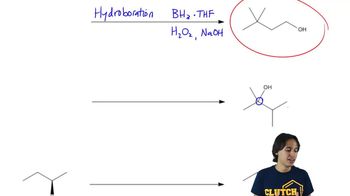All of the following compounds can react as acids. Without using a table of acidities, rank them in order of increasing acidity. Explain your ranking.
a. CH3CH2SO3H
b. CH3CH2OH
c. CH3CH2COOH
d. CH3CHClCOOH
e. ClCH2CH2COOH
 Verified step by step guidance
Verified step by step guidance Verified video answer for a similar problem:
Verified video answer for a similar problem:



 3:15m
3:15mMaster Why we need factors affecting acidity and when to use them. with a bite sized video explanation from Johnny
Start learning